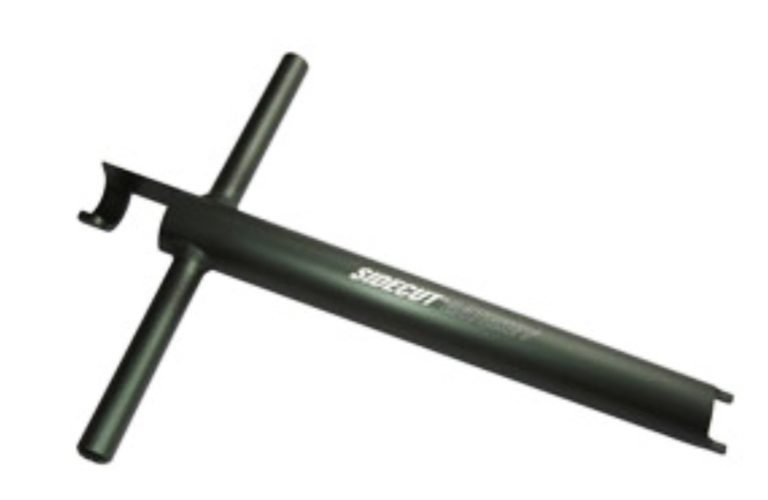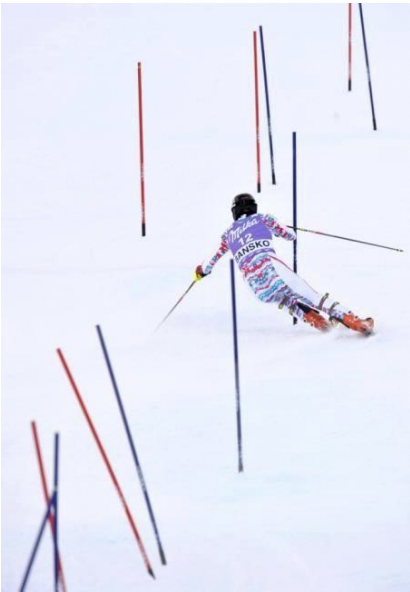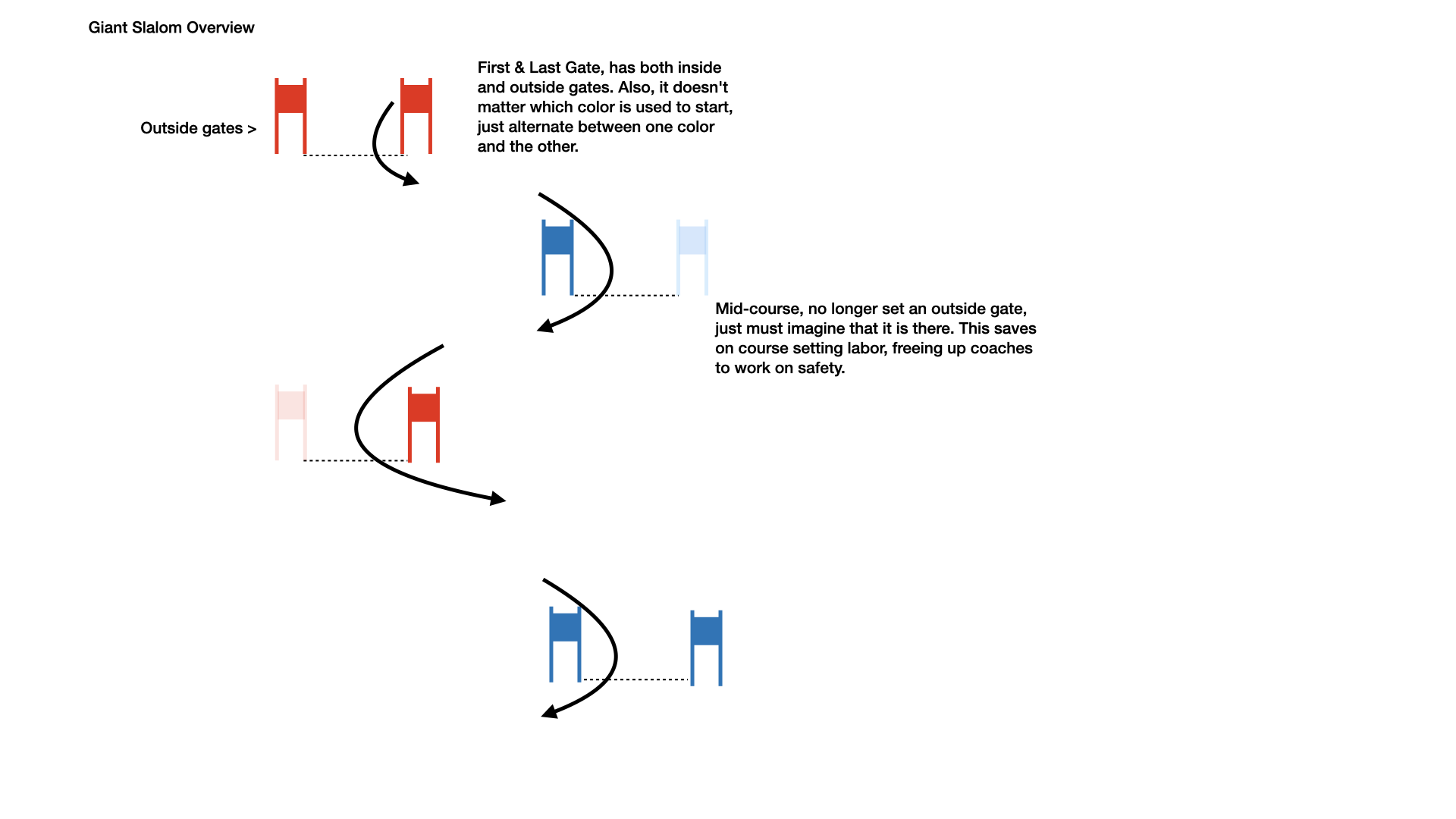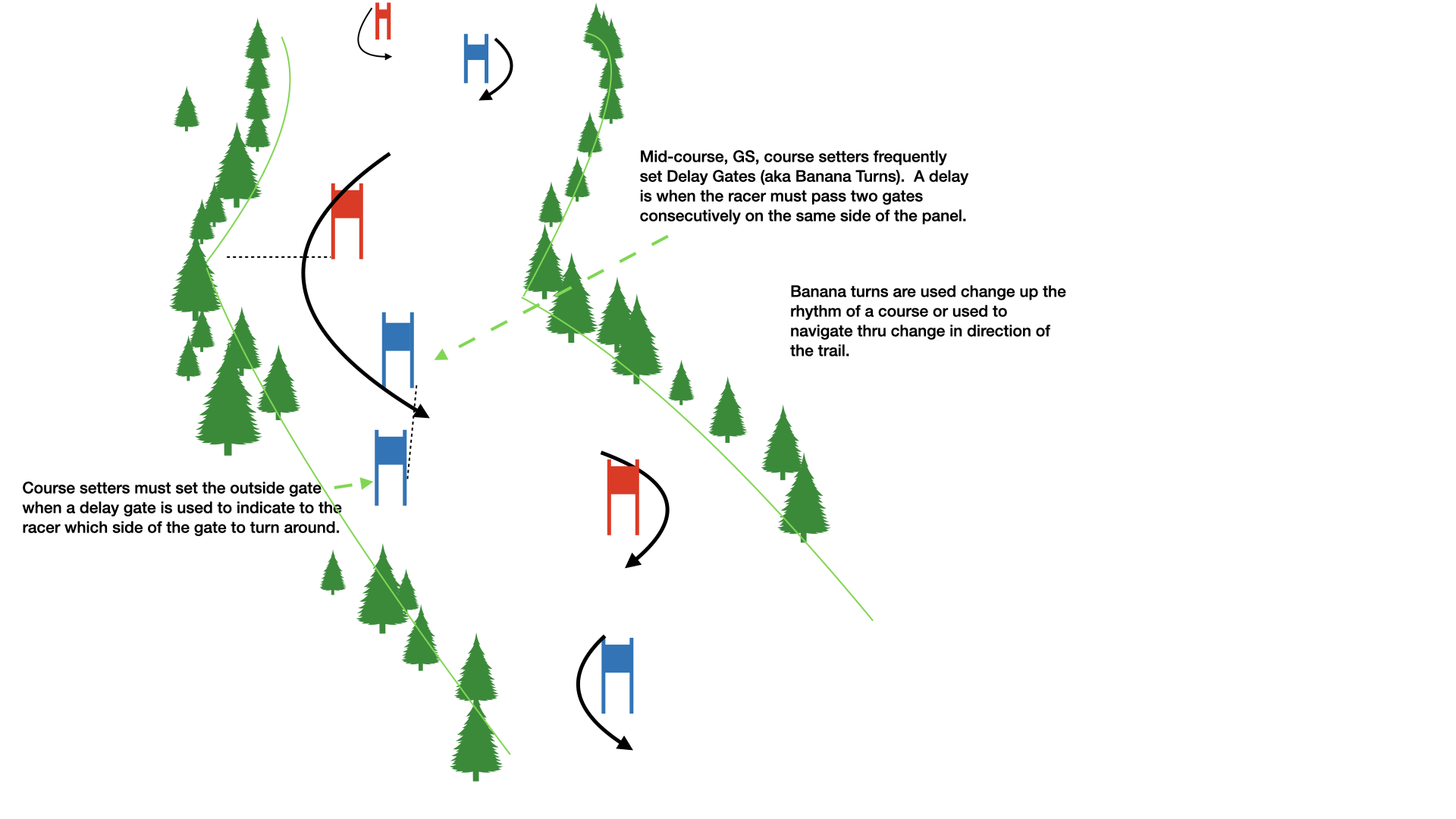About SRT's FAQ Page
In 2022, one of our new parents, Sarah Till, kept a log of all the questions that she came across as she went thru the process of signing her Child up for SRT. She took detailed notes on the answers to her questions, which we've made available to you. Since that time we've endeavored to keep this FAQ page active and up to date.
We hope our FAQ helps answer your questions that you may have, as you're considering SRT, Registering a child to SRT and WIJARA, and learning about Ski Racing.
Thank you Sarah for putting this list together!
Note: Please contact us if you have other questions. Please feel free to email Coach Mya Schaefer at myabe802@gmail.com or Sarah Carlson, the team's tracker at srteamcoordinator@gmail.com.
SRT, WIJARA, and Alpine Ski Racing FAQ's
Who are we?
Sundown Race Team (SRT) is a learn-to-race season-long program for skiers ages 5-19 years. While race experience is not required, the ability to confidently ski and stop in control on intermediate runs is a must.
Who can join the team? There are three criteria for joining SRT as an athlete.
Criteria for racers is Age 5 to 20.
Skier's must have the ability to load/unload from the chairlift without assistance, or be accompanied by an adult.
Must be able to safely navigate Black Diamond trails by themselves. Which is future defined as having the ability to stop in a reasonable range and the ability to make turns on the steepest sections of the trail.
Under Age 6? Each year several youngsters join the team, age 6 & under. If your child is younger than 6, please speak to a SRT Coach or Board Member regarding special arrangements that must be coordinated with the team's coaching staff.. SRT has several 6 & under racers on the team, however it's essential that the child is accompanied by an adult or older athlete to assist them thru the course, practice, and most importantly getting on and off the chairlift.
Age Groups
How are Age Groups classified? How are competitions organized?
WIJARA, the league that SRT participates, uses the U Group classification defined by USSS (formerly known as USSA). Below is a copy of the age group classification, clipped from the USSA Rule Book.
U20 |
Ages 18 to 20 |
U18 |
Ages 16 and 17 |
U16 |
Ages 14 and 15 |
U14 |
Ages 12 and 13 |
U12 |
Ages 10 and 11 |
U10 |
Ages 8 and 9 |
U8 |
Ages 7 and Under |
Equipment Requirements
Each racer must own their equipment (skis, boots, poles, helmet, and goggles. Plus, cold weather clothing.
A season pass for Sundown Mountain is required, with the NASTAR option selected. Let the front office know that your child intends to join the Sundown Race Team.
Best Time to Buy Season Passes?
February
President’s Day Weekend Season Pass Sale. BEST VALUE OF THE SEASON on season passes, for only 2 days following President’s Day. Available ONLINE ONLY, ski/snowboard the rest of this season PLUS the ’23-’24 Season!
August: Sundown Mountain Resort Annual August Pass Sale!
Do I have to volunteer?
Yes, you do have to volunteer. There will be volunteer jobs announced via this site, for our home race in January, plus other opportunities. Ski racing takes an army!
How Can I help my child stay safe out on the hill?
- Review with your child before each season and at least once a week the Team Resources >> "SRT Safe Skiing Code" and top priorities listed below:
- Ski Safely and in control at all times! Save the racing for the race course!
- No goofing off on the chairlifts! Sit still, keep one hand on the frame of the chair at all times, especially if there is no safety bar.
- Give skiers in front of you the right of way; they most likely can't see you
- Be careful overtaking ski racers in front of you. You are responsible for not colliding with them no matter where or what they're doing.
- Be aware of skiers coming up from behind you! If a trail is busy it is best to stay towards the center of a trail.
- Do not race down along the edge of a crowded trail!
Other Tips Important to a Successful Racing or Skiing Season
- No matter how experienced (or large or small the ski area is), you should never ski alone. Safety exists in numbers and in case of on-trail injury, a buddy can care for you or alert others for assistance.
- Never ski out of bounds or on undesignated trails. These areas are not monitored and there is no way to know what is under the snow, such as hurried branches or downed trees frozen to the ground.
- Always know the weather conditions and time of day before hitting the slopes; both variables can impact visibility and make obstacles or hazards difficult to identify.
- Pullover. If you must stop, stop on the side of a run, not in the middle, but leave enough room between you and the edge of the trail for a skier to get by if necessary!
- Get in shape for the season. Regular exercise will help reduce fatigue and injury.
- Select quality equipment. Improperly fitted or misused gear can cause injury.
- Keep your equipment in excellent working condition. Take time to tune your skis, sharpening the edges and waxing the bases.
- Clothing should be functional, layered, water-repellent, and slide resistant.
- Wear sunscreen! Ice and snow can reflect up to 80 percent of UV rays that reach the ground. That means in the snow, the UV radiation is hitting you from above and then again from below, significantly increasing your skin’s risk of harmful sunburn.
Technical vs Speed Events in Alpine Ski Racing Competition
At its core, the performance metric is simple, fastest time wins. The clock starts when the racer trips the start wand upon leaving the start. The clock stops when the racer crosses the finish line, where they pass thru light beam that stops the clock.
Racers are allowed to hit or even run over the gates, however both tips and feet must go around the outside of the gate.
Alpine events are lumped into two general categories Speed Events or Technical Events. Within each category there are two events. Downhill (DH) & Super G (SG) are Speed Events. Giant Slalom (GS) and Slalom (SL) are in the technical camp. SRT and WIJARA only compete and practice technical events.
Technical Events: Slalom (SL) and Giant Slalom (GS)
Speed Events: Super G (SG) and Downhill (DH)
Technical vs Speed Events by the Numbers.
- Slalom (SL) course may have 55 gates
- Giant Slalom (GS) has 25 to 30
- Super G (SG) has 12 to 16 gates.
- Downhill (DH) course may less than 5 gates.
WIJARA and SRT focus exclusively on the technical events Giant Slalom and Slalom.
What are "Gates"?
Gates are poles with a flexible hinge. The hinge is oriented right at the snow line. Poles can have a flexing hinge at snow level or for speed events be of rigid construction (static gates). Poles are approximately 1.80 m high and 27 mm in diameter. They're made out of a non-splintering material (plastic, plasticized bamboo or material with similar properties).
The original name "Breakaway Gates" is today further delineated with the names "Brushy Gates" or "Screw-in Gates" today. The picture above delineates a "Screw-in Gate". Below is a picture of a "Brushy Gate" base.
Note, if you're using screw-in gates, you will need a "Gate Key" that provides the ability to screw in or out the gates base into the hole created by the drill.
What are "Stubbies"?
Stubbies are short knee-high gates used to practice Slalom. Coaches use stubbies to teach the kids to make proper slalom turns and to move their turns closer to the gates. By taking away the top 2/3's of the gate, a racer can focus entirely on their SL turns, rather than focusing on knocking the gate out of the way. Back when I raced 90% of the Slalom practice we would host would be with stubbies.

How do racers navigate thru the courses?
Racers go out around gates. You can think of gates as being oriented either vertically or horizontally. Regardless of the orientation the racer must pass over the imaginary line between an inside and outside gate. We no longer set an outside horizontal gates mid course, only at the start and finish.
In Slalom we set just one gate. When a racer has mastered their Slalom turns and timing of their turns, they are able to tighten their line to the point where they're able to knockdown the slalom gates, running them over completely.

To learn more about Slalom see the web page on this site "Slalom Getting Started Guide"
In Giant Slalom we set two gates side by side connected by a panel. The panel allows for greater visibility than a single or double gate set.
In Giant Slalom as you can see from the diagram below the idea is to go out around the gates, to the "Outside of the gate".
Giant Slalom Delay Gates (a.k.a. Banana Turns)
In GS, similar to Slalom, course setters can set vertical or near vertical gates, where racers must pass on the same side. These turns are also called "Banana Turns". In WIJARA, every GS race is supposed to have one delay gate.
Variables in Ski Racing -- Be Ready for the Cold!
- Weather conditions change. At any given evening practice, you can expect cold temps. SRT continues to practice, until the temps dip below -10F/-23C or the windchill drips below -25F/-32C.
- WIJARA races are rarely canceled due to the cold, snow, or rain.
- No two courses or runs are identical. Ski racers must overcome constantly changing variables. Variables like weather, lighting, course set, and equipment challenge the athletes to adjust their technique in ways that many sports do not.
- Weather constantly changing temps, humidity, precipitation change snow conditions; one day a trail may be soft snow easy to carve turns to bullet proof ice. This impacts how ruts form around each of the gates as well.
- The lighting on the hill shifts constantly; sunny days offer clear visibility vs cloudy where flat light makes it difficult to see the outline of ruts.
- Each set is slightly different than the previous day's set, with ruts developing in different places based on the snow conditions.
- Equipment wears down; mainly a skis edges wear down, becoming duller, and bases must be regularly re-waxed.
Watching Alpine Ski Racing on TV or Online
Watching Ski Racing on TV or online is a great way for young ski racers to learn. The visualization is an excellent way for junior racers to unlock the secrets of the sport. Search online via your preferred search engine "Alpine World Cup GS, SL, DH or SG" or use YouTube to check out ski racing videos. Direct TV coverage can be difficult. The sports organizing body, FIS, schedules TV contracts annually.
If you've watched the Winter Olympics or seen pictures of ski racers on posters or advertising, chances are those racers were competing in either DH or SG, the speed events. High-speed ski racing is characterized by professional athletes executing amazing feats of athleticism. The Speed Events in Alpine Ski Racing, no doubt, are a thrill to watch, even more so to race, but they also contain much more risk and danger. With racers launching off rolls in the trail that can send them soaring down the trail hundreds of feet, the speed events take complete commitment from the athlete and supporting organization. Each year professional athletes are seriously injured in the speed events. WIJARA and SRT are dedicated to only introducing athletes to ski racing; we only practice and compete in the slower technical events, which still contain risk, but not nearly to the same degree as the speed events.
Where Downhill is composed of giant high-speed turns that have a minimal number of Gates, (Downhill courses and the way they're set, the gates are there just to direct you down the trail), the technical events are much slower with more gates. The gates force racers to execute more turns. The turns keep the speeds slower, where DH has minimum gates Slalom has the maximum number of gates that forces the racer to perform tight rapid succession turns down thru the course.
The speed events are absolutely thrilling to watch in person, online, or TV. If you like car racing or other types of races involving speed, then DH and SG will be right up your alley! Without going into too much detail, SRT does not practice or participate in the speed events. Why? Our hills simply aren't big enough. We would need at least 5x vertical available in the mid-west to be able to host a full DH or SG event, and at least 3 x the vertical to practice. (DH trails frequently are over 1.5 miles in length with the longest measuring 2.73 miles. It may take professional racers as long as 2.5 minutes to complete -- A very difficult and challenging task given the Anaerobic conditions athletes face!)
There are several Men's and Women's speed events to watch each season. Several of the races take place on courses that have hosted Downhill races for more than 100 years. Some of the top Downhill and Super G race venues to look out for:
Wengen, Switzerland: The Lauberhorn course is the longest on the circuit at 4,415 meters or 2.73 miles.
Kitzbuhel Austria: Known as the Hahnenkamm course on Kitzbühel’s Streif is considered to be the most dangerous course by professional athletes. My friend and former teammate, American racer, Daron Rahlves, won the Hahnenkamm in 2003. The treacherous course is filled with extremes, 85% gradient or 41 degrees, (It's common for maintenance crews sport ice climbing and mountaineering gear to work on the course!) up to 60 meter jumps, and an altitude drop, start to finish, nearly 900 meters or 2,950 feet.
St Moritz, Switzerland: The start of the men's downhill is called, "The Free Fall" an appropriate name as it's slope maxes out at 45% or 100% gradient. Racers accelerate from 0 to 80 mph in less than 7 seconds.
Beaver Creek: When the World Cup circuit comes to North America, typically in the Fall or early Winter, the top venue is the "Bird's of Prey" course at Beaver Creek.
Please let Coach Mya know if you have any suggestions for this page.


